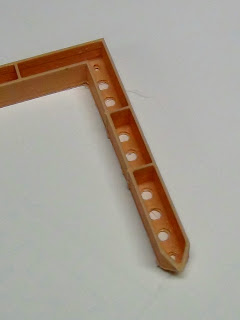WITH EVERY UPDATE
Make sure that you go into the Settings dialog to restore your preferences. Each new install resets rafts to ON and Supports to ON. And, 1st Generation Cube owners will have to reselect their printer type.
OBSERVED IMPROVEMENT
Other than the new green splash screen, no changes were immediately obvious. But, it just so happened that the piece that I wanted to print was the perfect piece to demonstrate what I THINK is going to be a hugely popular improvement.
One of the things all of us would like to see is a set of Release Notes for each new version. As far as I know, there are none. So, risking total embarassment if wrong, I'm going to offer an improvement that I believe I see.
No matter which 3D printer you've used, chances are it had issues with small gaps in areas around holes. It is especially prominent when holes are close together or near walls or edges. It is a very common 3D printer behavior.
Whether or not the improvement came in this new version or not, the Cubify Client now seems to have fixed that issue! If what I THINK I see is true, then it also may have ramifications for relatively thin wall construction. Time for some serious testing!
In the meantime, here is an image, albeit poor, of the part that demonstrates what I am seeing.
 |
| Small Holes in Close Proximity |
The designed specification for the outer walls in this object are 1mm with inside walls of .5mm. Interestingly, the inexpensive calipers from Harbor Freight measure various spots on the outer walls between .90mm to 1mm and the inner walls from .66m to ,87mm.depending on the orientation.